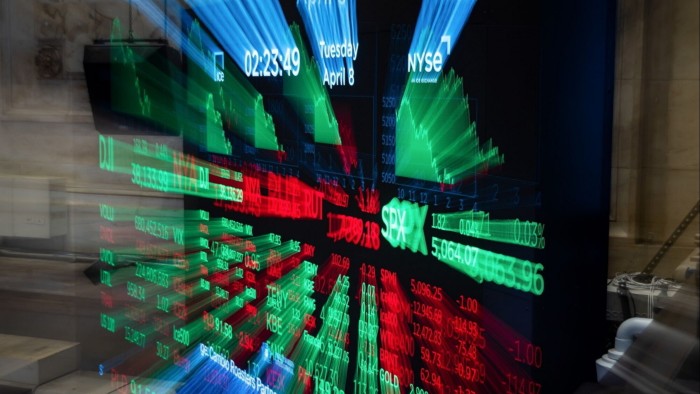Unlock the Editor’s Digest for free
Roula Khalaf, Editor of the FT, selects her favourite stories in this weekly newsletter.
The writer is senior adviser at Engine AI and Investa, and former chief global equity strategist at Citigroup
It is easy to blame US President Donald Trump for the recent convulsions in global financial markets, and many do. But let us not forget that such setbacks are a regular occurrence. The S&P fell about 20 per cent in 2022, but the world did not end. It dropped almost 10 per cent last summer, a setback that most market participants have already forgotten.
My point is that spikes in market volatility should not be a surprise, even if the catalysts are. We can blame Trump this time round, or rate rises in 2022 or an unwinding last summer of Japanese carry trades where speculators borrow yen to fund bets in other higher-yielding currencies. Financial markets can go down fast. Get over it.
But that does not mean there are no “pain trades”. Falling asset prices first expose, and are then accelerated by, excess leverage. As popular strategies become more crowded in the good times, their underlying returns diminish. The only way to keep delivering is by adding more leverage.
However, these winning bets can quickly mutate into the next pain trade. Initial losses and rising volatility trigger so-called margin calls for more collateral. If investors cannot post extra capital then lenders liquidate their positions. Stop-losses — trigger points for automatic selling — exaggerate the doom loop, which continues until excess leverage is cleared out. Then the markets rebound, often as fast as they fell. But those picking up pennies too close to the oncoming steamroller get crushed. Markets have followed this familiar pattern since the Trump election victory last November.
So where is the pain this time round? Higher volatility has whipsawed momentum-chasing CTA funds, a sector that derives its name from its roots in a strategy pursued by commodity trading advisers. The SocGen Trend index, which reflects their performance, is down almost 10 per cent in the year to date.
Rumours abound of significant losses by hedge funds adopting the infamous “basis trade” strategy that seeks to profit from small differences in the price of US Treasuries and associated futures contracts.
Elsewhere, long-short equity hedge funds crept further into long positions as markets rallied after the US election. But, according to Morgan Stanley, they cut their net leverage from 50 per cent to 37 per cent in the market turmoil following Trump’s “liberation day”. The latest pain trade seems to be the rapid appreciation of Taiwan’s dollar, which is causing disarray among life insurance companies on the island.
It is always tempting to build a fundamental narrative around such moves in financial markets. Asset prices collapsed as investors priced in the implications of Trump tariffs and threats to Federal Reserve independence. They recovered as the president rowed back.
Indeed, there is much talk that falling markets forced him to blink. But I see these short-term asset price moves as more technical, reflecting inevitable pain among leveraged strategies at a time of rising volatility. “Traders moved to price Trump’s latest announcement on . . . ” might make for a good story but in my experience, traders only ever move to price in the behaviour of other traders.
It is too early to say that the markets have priced in the longer-term economic implications of Trump policies, especially as we do not really know what those policies are. For any of you who were clever (or lucky) enough to buy into the recent dip, well done. The S&P 500 is now up about 14 per cent from recent lows. But remember your profits came from buying off distressed sellers, not a fundamental view that Trump policies will be good for markets. It is much too early to make that call.
Short-term pain trades usually fade away once leveraged speculators have been shaken out. But longer-term ones can reshape the whole investment landscape. For example, the 2000-03 bear market caused so much damage to UK pension funds that, encouraged by well-meaning legislation, they radically cut their weightings in domestic equities.
Where might the longer-term pain trades be brewing now? One candidate is private equity. Investors in this asset class used leverage to buy companies on the understanding that they could sell them 5-10 years later, but the traditional exit routes have largely closed. Their lenders will not force the PE firms to sell, but their end-investors are getting impatient. This will not turn into the short-term car crash so familiar in public markets, but a slow-motion train wreck remains a distinct possibility. After all, pain trades are not just for traders.
